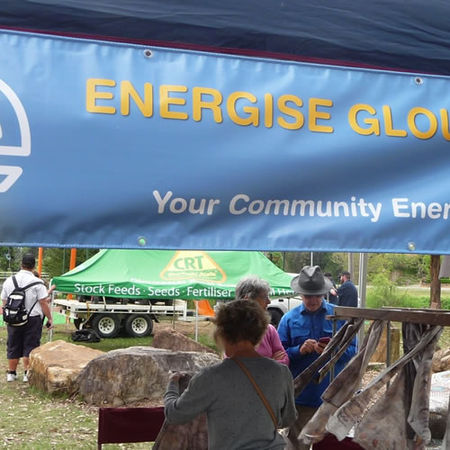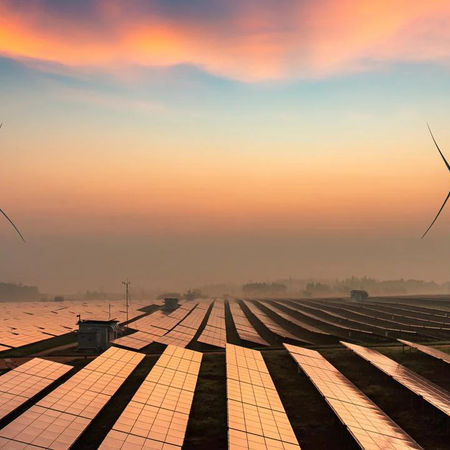
Chairman’s Note
Welcome to our third Newsletter. The Energise Gloucester (EG) Committee is quite busy with a number of activities, the details of some of these are presented in the articles below. An exciting development is that Powershop (an energy retailer) has offered us a grant of $10,000 for the Bucketts Way Neighbourhood Center rooftop solar PV Project. As well as this Committee members will be attending and/or presenting at several events over the next few months to promote EG; and to provide us with valuable information about other community energy developments.
We are keen to get new members so if you know of any interested people, or you would like to help with any of our projects please contact us by email at info@energisegloucester.org.
Yours with energy
David Marston (Chairperson)
Progress with the BWNG Solar PV Project
We are making good progress with this project and are close to deciding on the size of the system. The final details of design and contractual arrangements with the Bucketts Way Neighbourhood Group (BWNG) will be finalised soon and we plan to have the system up and operating by the middle of this year.
The BWNG has considerable office and meeting room space at the Center so the daytime electricity usage is quite large from Monday to Friday. This suits a reasonably large solar Photo Voltaic (PV) system with a generation capacity of about 31kW. Such a system would include 120 panels on the roof and 2 inverters at a cost of approximately $41,000.
On average this system would generate approximately 170 kWh of electricity per day in summer and 75kWh in winter. The Center uses an average of 120kWh per day so in the summer excess generation and in the winter there will be a need to buy electricity from a retail supplier. This is normal with a PV system.
Energise Gloucester (EG) will supply and operate the PV system and sell solar electricity to the BWNG at a price per kWh less than their current purchase price. This will reduce the operating costs of the Center and will also mean that the BWNG will own system in approximately 3-4 years. Once they own the system their electricity costs will be even further reduced.
EG will receive approximately $10,500 from the Federal Government for the renewable energy certificates and a donation of $10,000 from Powershop (see below). We are very excited and most appreciative of this grant from Powershop.
EG will be planning a fundraising program for the remaining funds once final costs are known and a contract is signed with BWNG. The Committee anticipates that these funds will come as donations and loans at a low or zero interest to be paid back in an agreed period or when the project is handed over from EG to the BWNG.
Powershop Project

at the launch of 'Your Community Energy' in Melbourne
Powershop is an electricity retailer in Victoria, NSW and Queensland and is part of the Meridian Energy company. Powershop supplies 100% Carbon Neutral power at no extra cost you and provides online usage tools to help customers actively reduce their energy consumption. On Thursday of last week they launched a Powerpack project called Your Community Energy to facilitate, support and help fund small-scale, community energy projects such as our project. This initiative has been developed to:
- encourage more community energy projects by facilitating fundraising;
- positively contribute to the renewable energy mix in Australia;
- demonstrate that clean energy technologies work and that a low carbon energy future is possible; and
- give all their customers choice and variety in the initiatives they want to support.
Choosing to purchase this Powerpack enables customers to support community energy projects as their power has a 6.6c/kWh premium included. Powershop pools all of these premium amounts and then distributes this money to the projects they are supporting in Victoria and NSW. For more information about Powershop visit their website, www.powershop.com.au
Our Solar Story - Maureen and David Hjorth
David and I moved to Gloucester 10 years ago and our first outing was to the Gloucester Show.
As our house has a Northerly aspect, we had discussed the use of solar panels. The first stall inside the showground displayed banners advertising solar. David went straight over and made an appointment for a representative to come and discuss our requirements. As we left the stall we were asked if we would like some free raffle tickets, two of which were placed in our hand.

Later that afternoon the raffle was drawn and to our amazement, David's ticket was pulled out of the hat. THE PRIZE !!! A one kilowatt system comprising16 panels plus a separate solar hot water system.
At that time the government was offering to pay 60cents per kWh for the electricity that we generated and fed into the grid. We were then charged only 15 cents for any electricity that we used from the grid. This being the case we purchased another 12 panels giving us a total of 28. Half were placed on the east side of the roof and half on the west, giving us power all day.
The total size of our system is 1.68kW, with the daily average power generated being about 9kWh in the summer and 5kWh in the winter.
We also turned off the hot water from the grid and installed the solar hot water system to let the sun give us our hot water supply. This all worked well and was financially beneficial.
We knew that at the beginning of 2017 the 60 cent deal would be withdrawn. So the search began in 2016 for a company that would give us a fair arrangement. During our research, it became apparent that companies, who paid a higher rate per kWh of power going into the grid, also charged an even higher rate to buy from the grid. We settled on a company that we thought gave us the best deal, had a smart meter fitted and sat down to rethink our power usage.
Now all big electrical devices, such as the washing machine, vacuum cleaner, dish washer, stove, oven, kettle and air conditioner are used in sunshine hours. If there is no sun only the basic items are used. We also found that if the house is closed up when the air conditioner is on, it can be turned off when the sun goes down and it stays cool enough to be comfortable into the evening hours. The second fridge wasn’t really needed and was switched off. All devices are now completely turned off at the wall switch when not in use. It’s remarkable how many devices have stand by switches.
We have attended various talks and information sessions re the use of batteries to store excess power that can be utilized in the evening. First suggestion was to buy two deep cycle batteries, this being a cheaper option. One issue with this, was that the power had to be transferred manually from solar to battery every night as the automatic switch is expensive. Second option was to buy the batteries specifically designed for storage purposes. Currently these are quite expensive. We have been told that, hopefully as more people require them, companies will be in competition to give the best price to the customer, thus reducing the cost.
Another factor to add to this mix for consideration is whether or not batteries would in fact be beneficial. The way to measure this is to work out how much power our panels produce and compare this how much power we use. If the difference is minimal then to store a small amount in a battery is believed to be not a good idea. However if the difference is considerable, batteries are a definite option.
One piece of advice we have been given by everybody we have spoken to is; if you buy batteries do not disconnect from the grid until you have worked it all out. Second piece of advice. Buy a generator as a back up.
So many things to consider, many things still to research. The end result is that the sun is our main provider, if not THE only provide for all electrical appliances in our home. All our hot water is still supplied by solar power only.
Do you know the Answer ?

How many homes can a single 1MW wind turbine power:
A 10
B. 12
C. 3
D. 500
Be the first person to send the correct answer by email to the editor@energisegloucester.org and receive a complimentary coffee at The Fox Den.
The answer to last month's question: Netherlands






